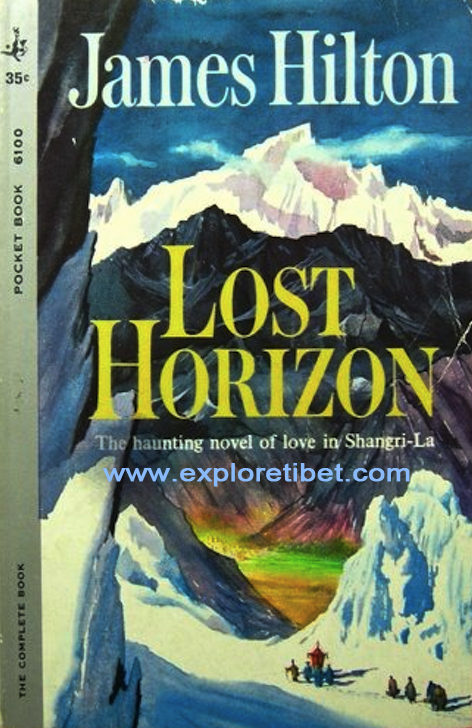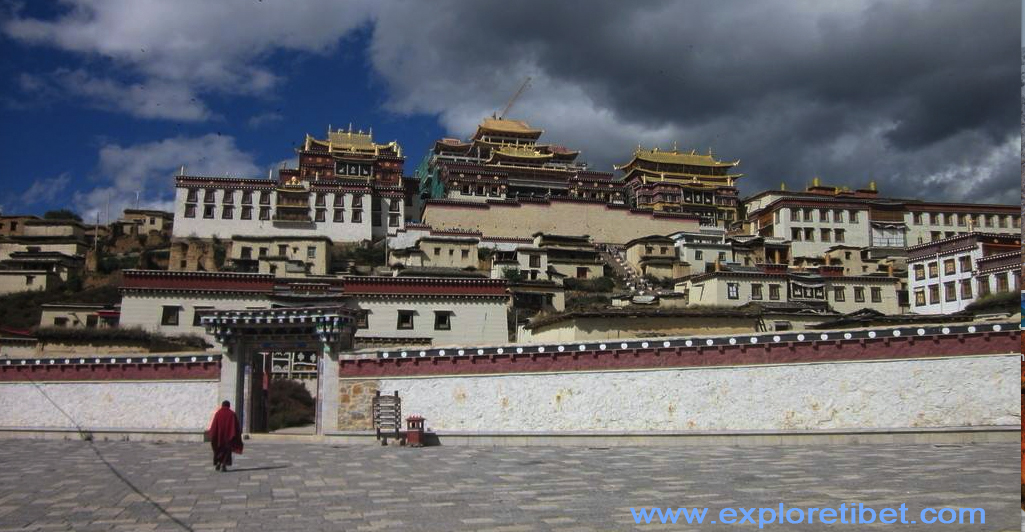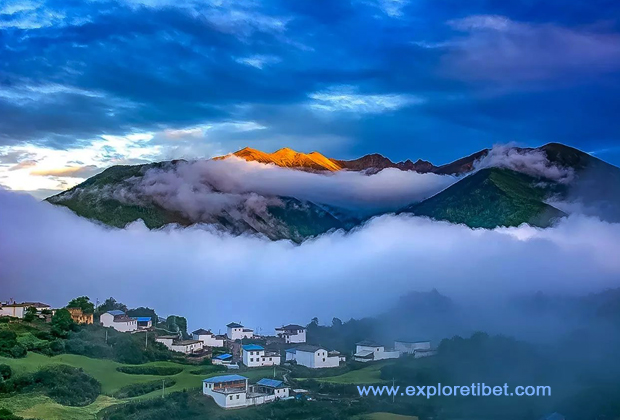Shangri La – The Legend and the Reality
A legendary realm high in the Himalayas, Shangri La first appeared in western text in the 1933 novel Lost Horizon by British novelist James Hilton. In the novel, Hilton described Shangri La as a land where the people live in perfect harmony with nature, guided from the lamasery in the valley. The story of the discovery of a hidden valley where people live in a sublime utopia has become a legend in the literary world, and has produced a number of films, radio adaptations, and even a musical on Broadway. What’s more, it has even prompted the renaming of a Chinese town in Yunnan Province. So what is Shangri-La, and where did Hilton get his idea of the paradise valley in the Himalayas?

Shangri-La: The Fictional Utopia
In fiction, the story of the discovery of Shangri-La is set in the early 1930’s, when British residents of Baskul in India were being evacuated to Peshawar during the revolution. Four people are flown out over Tibet when the plane crashes somewhere in the heights of the “Kuen-Lun” Mountains. The Chinese pilot tells them to seek shelter at a lamasery he spotted as the plane went down, before he dies.
In the lamasery, they find a number of young postulants, and meet the High Lama. They are told the lamasery was built by a Catholic monk from France in the early 18th century, and that the people of the valley age much slower than out in the rest of the world. However, anyone who leaves the valley after living there a long time will grow old and die very quickly. Finding the High Lama is actually the French monk, now 250 years old and dying, one of the four is chosen to lead the lamasery on his death.

Gaden Songtsen Ling Monastery-Shangri La
As another of the four has fallen in love with a young-looking Manchu girl, he decides to leave with her, and convinces the others to go along too. Only one of the five was ever seen again, in a small hospital in Chung-Kiang (possibly Chongqing), who had been brought in by a very old Manchu woman, believed to be the Manchu girl that left the valley, who died shortly after. The sole survivor told his story to a British neurologist at the hospital, and then left again, preparing to make his way back to the legendary valley of Shangri-La, but was never seen again.
Sources for Shangri-La
In reality, there exists a number of ancient scripts, many of which could have been included in the inspirations for Hilton when he wrote the novel. Many of the references in the novel were inspired by Hilton’s love of the National Geographic articles of the botanist, Joseph Rock, who spent many years exploring the areas of Southwest China and the Tibetan borderlands. He was also fond of reading of the early explorations of Tibet by French priests, Huc and Gabet, as well as the multitude of Tibetan material that is available in the British Library in London.
Hilton did actually visit the Hunza Valley in Kashmir, close the Chinese border, some years before he published Lost Horizon. The valley is lush and green, surrounded by mountains, and with only one way in or out, and it is believed to have added to Hilton’s inspiration for the physical description of the valley of Shangri-La.
In Tibetan Buddhism, Shambhala is a core concept that describes a realm where man lives in harmony with nature, and is connected to the Kalachakra, or “Wheel of Time”. In the Shambhala Sutra, written by the 6th Panchen Lama, this ideal land is described in great detail, and notes that some of the locations of Shambhala lie in what is now Ngari Prefecture, in Northwestern Tibet.
There is also a lot of folklore from the Altai Mountains, which lie in the area where China, Russia, Mongolia, and Kazakhstan border each other. One such item describes Belukha Mountain as a gateway to Shambhala.
The Kunlun Mountains, which were little-known or explored at the time, could also have been a source for the Kuen-Lun mountain range described in the novel. An old map of Tibet shows the mountain range being spelled as “Kuen-Lun” (, and in Chinese postal addresses, it is written as “Kwenlun Mountains”. And it should be noted that parts of the Kunlun Mountains, do stretch far across northern Tibet into Ngari, the area mentioned in the Shambhala Sutra.

Shangri La in Yunnan
Where is the REAL Shangri-La?
In reality, no-one really knows if such a place does exist. Despite there being many mentions of a hidden utopia in Buddhist texts and ancient folklore, there is no solid evidence that Shangri-La, or a place similar, really exists outside folk tales and religious sutras. Shangri-La has variously been claimed to have originally been in Tibet, Sichuan, Yunnan, and a number of other places, but with no real evidence.
In 2001, the county-level city of Zhongdian in northwest Yunnan Province was officially renamed Shangri-La, or Xianggelila in Chinese, to promote tourism to the area and in every year many Tibet Tours operate there. A beautiful part of the Tibetan area of Yunnan, the town does lie in a hilly and mountainous area, but has no evidence of any claim to be the “real” utopia.
There are many references to places in the novel that match locations described by Joseph Rock in his explorations of northern Yunnan Province, particularly in the area of the Naxi people in the foothills on the boundary between Yunnan and Sichuan Provinces. However, Hilton never actually travelled to China, and his own responses to interviews validate his use of the literary works of Rock, as well as Huc and Gabet, in inspiring his “imagination”.
Others suggest that the abandoned city of Tsaparang, in the Ngari Prefecture of the Tibet Autonomous Region, could be the location of the legendary Shangri-La. However, the city was home to the ancient Guge Kingdom, and host to two great temples, and the people of Tsaparang disappeared centuries ago, without a trace.

Shangri La in Yunnan
One of the many mythical places that can be found around the world in literature and religion, Such as El Dorado, The Fountain of Youth, The Holy Grail, and Tír na nóg, Shangri-La has become synonymous as an analogy for a lifelong quest for something elusive. Does such a place really exist? And if it did, would anyone really want to come out and tell the world? Probably not, since it would no longer be what the name suggests it to be, a perfect hidden utopia. But, still the Yunnan in Sichuan Tibet is great example of Shangri-La with its natural beautiful landscape, which has attracted millions of Tourist for Tibet Travels in the past few decades.
